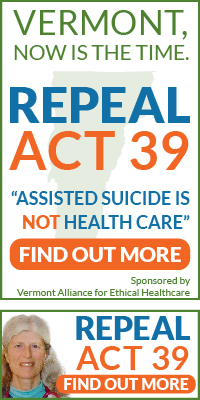The following resolution praising the state’s suicide prevention workers was presented today in the VT House: http://legislature.vermont.gov/assets/Documents/2016/Docs/RESOLUTN/HCR039/HCR039%20As%20Introduced.pdf.
Among the choice quotes:
“…suicide is a public health issue that affects individuals and families of all ages, socio-economic strata, ethnicities, and cultures…”
True Dignity could not agree more. We have been saying exactly this for years. According to the resolution, there are approximately 80 suicides a year in this small state, almost twice as many as deaths from highway accidents.
In 2005, the Vermont Department of Mental Health published The Vermont Suicide Prevention Platform, including media guidelines for reporting on suicide without contributing to the phenomenon of suicide contagion, in which people who read or hear certain types of reports about a death by suicide then commit suicide themselves. This problem is exemplified by the 12% increase in suicides in the month that followed the widely publicized 1962 suicide death of Marilyn Monroe.
The Vermont Suicide Prevention Platform has a whole section entitled, “Suicide Contagion is Real”. Among the measures it recommends for preventing suicide contagion are avoiding”…inadvertently romanticizing suicide or idealizing those who take their own lives by portraying suicide as a heroic or romantic act…”, reporting suicide methods or the locations of suicides, and placing suicide reports “…on the front page or at the beginning of a broadcast…” (http://mentalhealth.vermont.gov/sites/dmh/files/publications/DMH-Vermont_Suicide_Platform.pdf).
On Tuesday, the Bennington Banner had a front page story about a Brattleboro artist who was the third person to commit suicide with assistance under the Vermont law. We won’t link to it.
On Wednesday morning, this author got a request for prayers for a young teenager who had attempted suicide in Bennington the night before, Tuesday, the same day the report was in the paper.
We have absolutely no reason to link this suicide attempt to the newspaper story, and absolutely no reason not to. Suicide contagion is most prevalent among the young.
The only reason that story appeared in the Bennington Banner was the existence of legal assisted suicide in Vermont. The Banner story was restrained compared to a previous story on the web-based news service, Seven Days, that quoted the woman’s sister calling the death “awesome” and in which the reporter herself called it “remarkable”.
The Brattleboro woman’s death would not have been big news if she had died, even from suicide, before the legalization of assisted suicide in Vermont. Legalization is what put it on the first page of two news outlets. The Vermont legislature is as responsible as the media for the glamorization of one kind of suicide, despite the knowledge that it can lead to other kinds.
Did you know that assisted suicide in Oregon, the only state for which we have data, is rarely sought for pain, or for the fear of pain? Oregon’s annual reports show that the reasons people give to doctors for asking for a lethal prescription are: 1)loss of autonomy 2)loss of ability to engage in enjoyable activities and 3)loss of dignity. How different are these problems from those that move people who have no terminal diagnosis to commit suicide? Suicide.org (http://www.suicide.org/suicide-causes.html) lists “Feeling trapped” and “feeling helpless” as markers of depression, which it says underlies most suicides. How different are these from loss of autonomy? It also lists, “losing interest in activities that you previously enjoyed”. How different is that from loss of ability to engage in previously enjoyable activities? It lists “being in a perceived humiliating situation” as a trigger for depression. How different is that from loss of dignity?
Today’s resolution shows that the legislators in our state view the terminally ill differently than people with problems that are almost identical to theirs. Some people get suicide prevention, while others get aid in suicide.
There is litigable discrimination going on here. Discrimination against whom depends on one’s point of view, but we can expect lawsuits and the working of this out in the courts.
Some court cases will be those of people without terminal illnesses demanding the same help in committing suicide that the state now offers only to those with terminal diagnoses. We know that people who are not dying have demanded and received assisted suicide and euthanasia in the Netherlands and Belgium, where a pair of twins asked for and were granted euthanasia because they were going deaf, where a person received euthanasia because of unhappiness with the results of a sex change operation, and where the media reported a few months ago on how the children of an elderly couple were helping them arrange for their euthanasia deaths so that one would not be left alone in a situation in which, the son told the press, he and his siblings did not have time to visit.
On the other hand, there will also be lawsuits demanding compensation for the victims of assisted suicide, victims like Tom Mortier, who is challenging the Netherlands’ assisted suicide/euthanasia laws after receiving the traumatic news only the day after his depressed but otherwise healthy mother’s death by euthanasia (http://www.worldmag.com/2014/09/man_challenges_belgium_s_euthanasia_law_after_mom_s_death).
In the meantime the general suicide rate, already very high in VT, as the resolution noted, may very well increase as Oregon’s has, at a rate consistent with suicide contagion.

